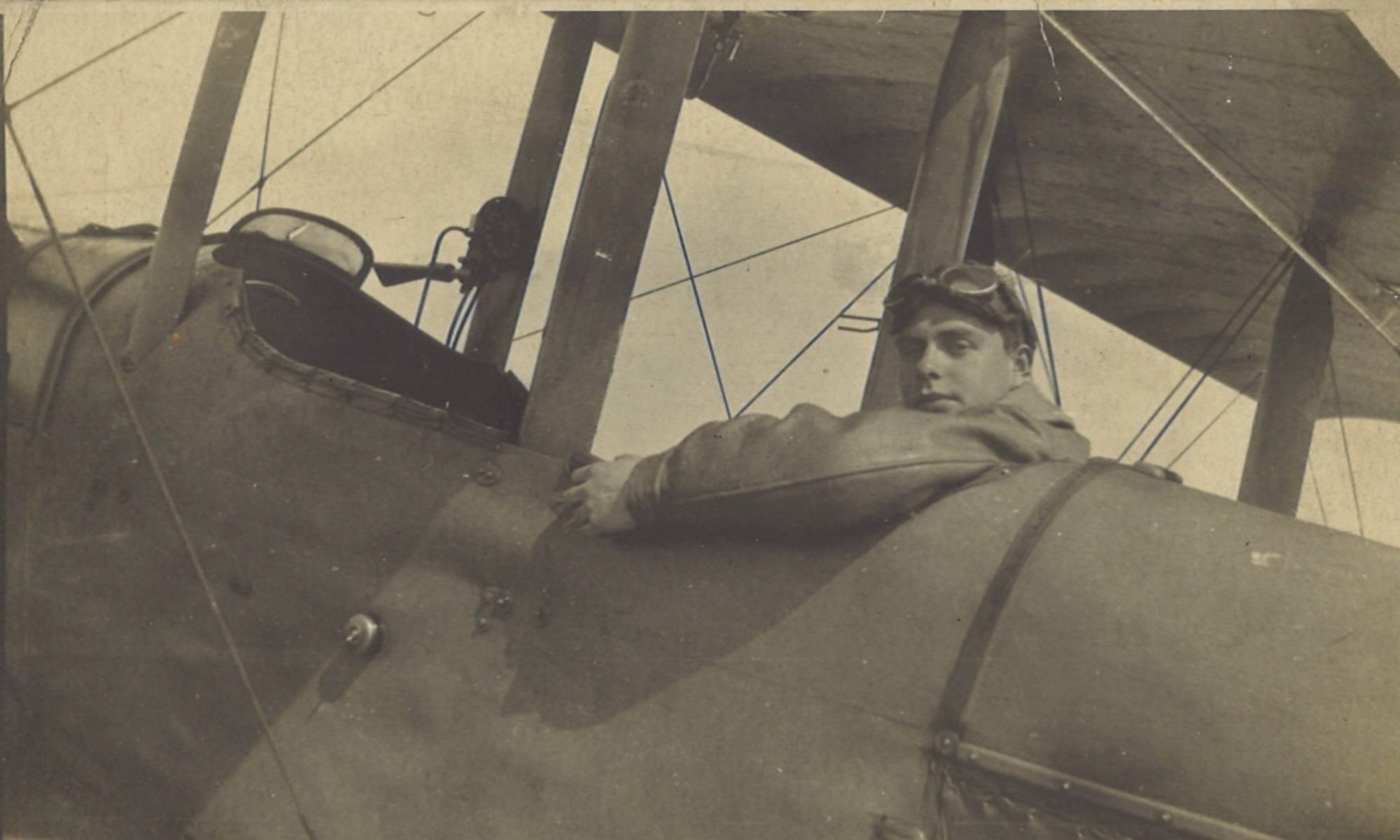At the back of Greg’s log book is a table, in which he compiled some summary statistics. They show his flying hours and armaments used over the months he was on the Western Front.
Log Book

| MONTH | BOMBS | VICKERS | LEWIS | TOTAL | HOURS |
|---|---|---|---|---|---|
| JUNE | 24 | 1,000 | 1,500 | 2,500 | 23 hrs 55 m |
| JULY | 44 | 1,200 | 2,200 | 3,400 | 55 hrs 0 m |
| AUGUST | 54 | 4,100 | 5,300 | 9,400 | 46 hrs 20 m |
| SEPTEMBER | 8 | 500 | 700 | 1,200 | 12 hrs 15 m |
| OCTOBER | 13 | 400 | 300 | 700 | 22 hrs 05 m |
| NOVEMBER | 12 | 100 | 600 | 700 | 7 hrs 50 m |
| TOTALS: | 155 | 7,300 | 10,600 | 17,900 | 167 hrs 25 m |
Flying and Armaments Statistics
There are a few interesting points that emerge when comparing the figures month-by-month, and when looking at how they were built up. As a reminder, the pilot fired the Vickers gun through the propeller, which was safeguarded by a synchronisation mechanism. The observer fired the lighter and more manoeuvrable Lewis gun, which was mounted on a Scarff ring around his compartment. More on the RE8 and its armaments here:
June
Greg arrived at the squadron as a new pilot on 3 June 1918. He had a rocky start, with engine failure and a crash landing on 4 June 1918. As a result of his minor injuries he didn’t fly for a few days. According to his log book:
- his observer first fired from his Lewis gun on 13 June 1918;
- Greg first fired from his Vickers gun on 15 June 1918; and
- he dropped his first bombs on 16 June 1918.
Shortly afterwards he was off for a few days with an attack of “Merville Fever” (Spanish flu), starting on 20 June 1918.
So his first month was not a full one: 17 flying days in all.
July
In terms of hours flown, July 1918 was Greg’s busiest month. He spent 55 hours in the air, which works out at an average of just over 1 hr 45 mins per day (including non-flying days). To start with he was mostly flying counter-battery patrols. There were more observations of artillery fire (“shoots”) later in the month. A big day was 18 July 1918, when he directed fire onto Merville railway bridge that brought it down.
On 20 July 1918 Greg began to record in his log book the number of rounds fired and bombs dropped. This was refined on 29 July 1918, when he began separately recording the number of rounds fired from the Lewis and Vickers guns. Possibly this was part of an effort to encourage aircrew to shoot and bomb the enemy more. The numbers certainly increased.
August
Another busy month. In fact, by the measure of small arms fire, it was by far the busiest. The 9,400 rounds fired by both Lewis and Vickers guns were more than the rounds fired in all the other months that Greg was on the front put together. His 46 hrs 20 mins in the air averaged out at about 1 hr 30 mins per day, again including non-flying days. The work was – as had now become usual – a mix of counter-battery patrols and shoots. One of the shoots was on 8 August 1918, the day of the start of the Allies’ Final Offensive. It was a shoot on a hostile battery just west of Merville, and Greg was evidently proud of it.
September
Greg was on leave for most of the second half of the month (from 18 September to 2 October 1918). But, even so, the figures are quite light for the time that he was in the field. This is partly accounted for by eight non-flying days from 4-11 September 1918 for unknown reasons. In fact, he was only in the air on six days in September. So his total of 12 hrs 15 mins in the air for the month works out at just over two hours per flying day. Small arms fire was well down on the previous month, even allowing for the reduced flying.
October
There were 17 flying days this month. On 13 October 1918 the squadron moved from Rely to Chocques. By this time, the German army was on the run, and Greg’s work was a mixture of counter-battery and reconnaissance patrols. His first patrol east of Lille – quite a milestone – was on 17 October 1918. And five days later, on 22 October 1918, the squadron itself moved east of Lille to Ascq. Greg didn’t direct a single shoot in the month, and there wasn’t much small arms fire.
November
The November statistics only cover the time up to the armistice, which is proper since they relate to war flying. During the time, the bomb tally and the small arms fire was essentially the same as for the whole of October. This probably shows that in the closing days some increased pressure was being applied to the retreating enemy. And the small arms figure also includes the large number of rounds fired in the château-shoot up adventure that Greg and Capt. Gordon had on 2 November 1918. That was the last day Greg fired small arms ammunition in the war. He didn’t fly for five days after 3 November 1918, possibly because of another attack of flu. On 10 November 1918 Greg dropped his last bombs. Armistice Day itself saw merely a joyride and a travelling flight to the squadron’s new home at Marquain, across the border in Belgium, untroubled by the newly silent guns.
November flying during the armistice only amounted to a further 55 mins.














































